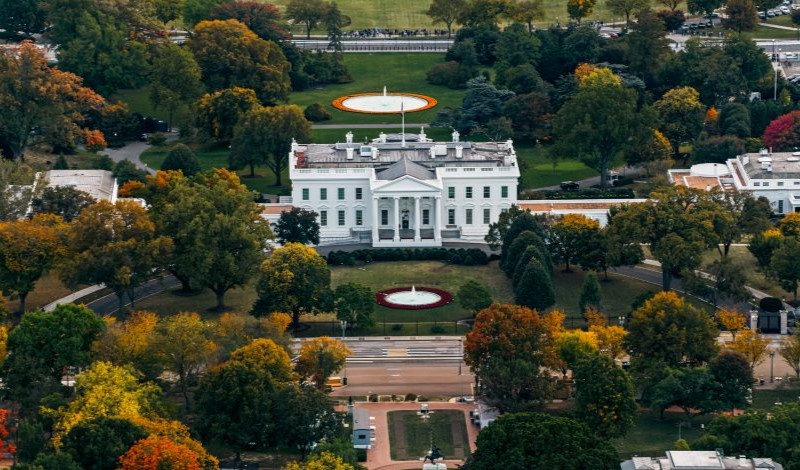
President Trump has issued dramatic deregulatory executive orders, but some normalcy remains.
President Donald J. Trump swept into office just over 100 days ago like a gale-force wind, taking chainsaws to agencies, imposing unprecedented tariffs on the rest of the world, and threatening to absorb friendly nations. The regulatory state has not been spared. Indeed, President Trump has promised dramatic deregulation and is taking some extraordinary steps to do that. But amid the chaos, some traces of normalcy remain.
President Trump has issued more executive orders during his first 100 days than any other President. Although President Joseph R. Biden also aggressively used executive orders during his first months in office, his 100-day count of 42 orders pales in comparison to President Trump’s 143 and counting. President Trump has also issued numerous presidential memoranda, which have the same effect as executive orders but are not numbered.
These directives include the momentous, such as revoking 78 of President Biden’s orders on his first afternoon in office and imposing huge tariffs on imported goods; the petty, such as ending the government’s use of paper straws; and the spiteful, such as exacting revenge on disfavored law firms.
About 15 of these directives directly address regulation. Among the most significant are those implemented through the Department of Government Efficiency (DOGE).
In February, the President directed agencies to work with DOGE and the Office of Management and Budget (OMB) to initiate a process to rescind “unlawful regulations and regulations that undermine the national Interest,” including those “that impose significant costs upon private parties that are not outweighed by public benefits.” In April, the President pushed the bounds further, directing agencies to finalize “repeals of facially unlawful regulations … where doing so is consistent with the ‘good cause’ exception in the Administrative Procedure Act.” The President claimed in his memorandum that recent U.S. Supreme Court opinions gave agencies “ample cause and the legal authority to immediately repeal” certain rules without public notice and comment. For almost 80 years, the Administrative Procedure Act has required some transparency and accountability for regulatory and deregulatory actions, and courts are unlikely to think that the cases cited in the memorandum have such sweeping implications. The U.S. Constitution, however, does give the President the authority to see that laws are faithfully executed, and some existing regulations without clear statutory support may be vulnerable.
President Trump has also reinstated a regulatory budget, but he has upped the ante from his first term’s 1-in-2-out order, now requiring agencies to “identify at least 10 existing regulations to be repealed” for every new regulation issued. OMB’s guidance to agencies on implementing this order is similar to that of his first term and will likely make compliance manageable. Only “significant” new regulatory actions—generally less than 10 percent of all rules—will count under the order, but agencies can offset them by identifying non-significant deregulatory actions. With that accounting flexibility, this part of the order may end up being a mere bookkeeping exercise. The more binding requirement is that agencies must identify more than a dollar-for-dollar offset for the costs of new regulations. For fiscal year 2025, the executive order requires “that the total incremental cost of all new regulations, including repealed regulations … shall be significantly less than zero.”
A February executive order, which went into effect in on April 21, exerts greater presidential control over independent regulatory agencies such as the U.S. Federal Trade Commission and the U.S. Securities and Exchange Commission. Like so many of President Trump’s actions, this order pushes the boundaries of presidential authority. One section of the order, however, follows through on something Presidents for the last 45 years have considered, but hesitated to do—subjecting these agencies’ regulations to OMB’s coordination and review.
Despite all these disruptive actions, one important regulatory guidepost remains as the first 100 days draw to a close. President Bill Clinton’s Executive Order 12,866, which has guided regulatory review within the executive branch since 1993, is still intact, as are several of President Barack Obama’s regulatory orders. These orders direct agencies to analyze regulatory benefits and costs. Not only does President Trump’s DOGE implementation order cite President Clinton’s order five times, but OMB’s guidance on implementing the 1-in-10-out order explicitly tells agencies to “continue to assess and consider both the benefits and costs of regulatory actions, including deregulatory actions, when making regulatory decisions, and issue regulations only upon a reasoned determination that benefits justify costs.”
The Administration may hope that its shock-and-awe approach allows it to make big changes while the rest of us are reeling. The U.S. Congress has, so far, seemed unwilling to provide checks and balances on the exertion of presidential power, but the courts appear less passive. Although executive orders themselves are generally not subject to challenge—as long as they are not binding beyond the executive branch—agency actions taken under the direction of those orders can be litigated. And the challenges have already begun.
This essay is part of a series, titled “President Trump’s First 100 Days of Deregulation.”




